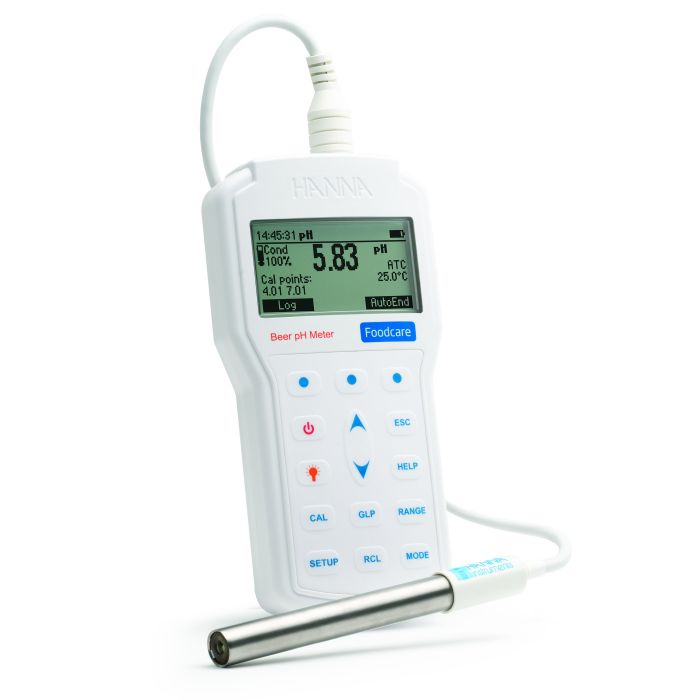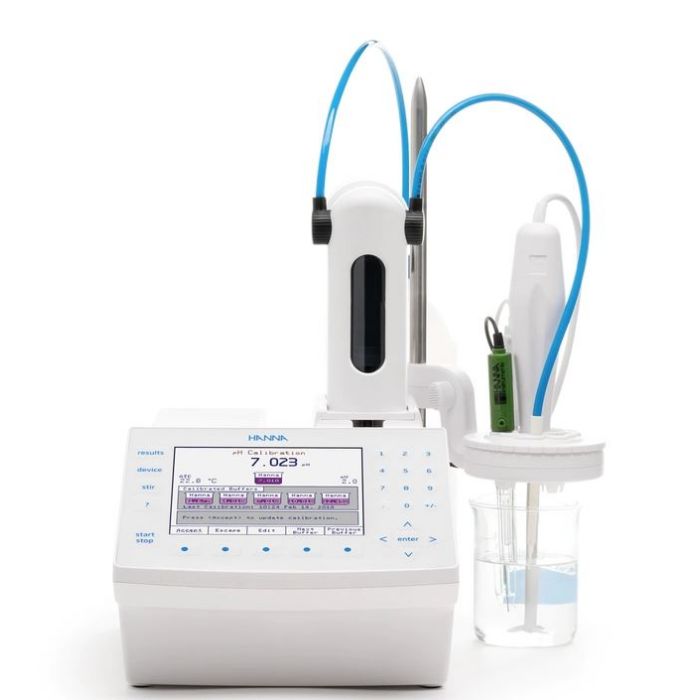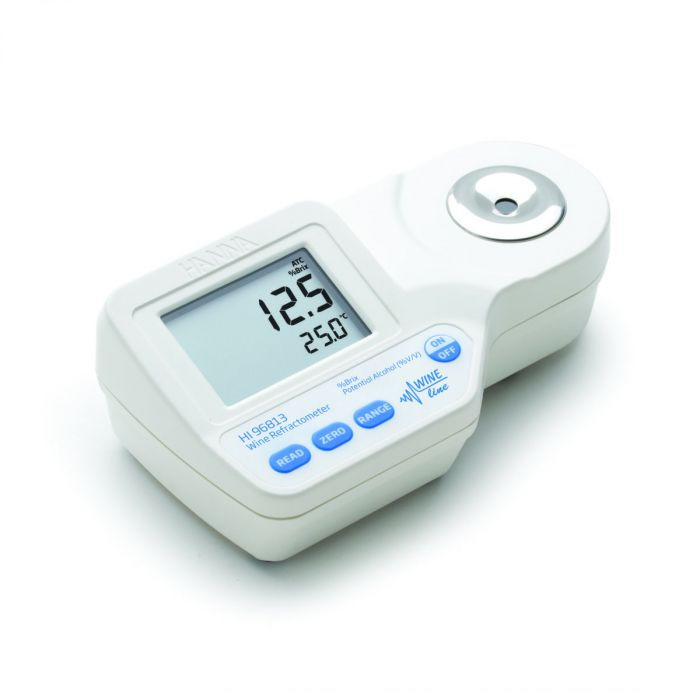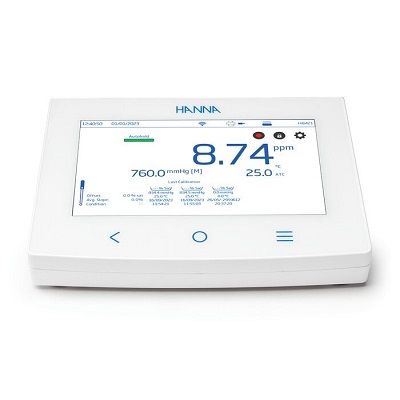Cider is a popular drink that is extracted from apples.
Making cider involves several processes, including pressing, fermenting, bottling and storing.
The quality of cider can be affected by various parameters, such as pH, acidity and sugar content.
Measuring these parameters is crucial in ensuring that the cider is of the desired quality.
Hanna Instruments produces a variety of instruments that are used to measure these parameters.
Cider production
Production of cider begins with freshly harvested apples, which are first scratted, or ground, into pomace.
The pomace is then transferred to the cider press, where the pulpous juice is squeezed out, forming apple must.
The apple must is pasteurized by heating it to 71°C for 45 minutes to kill any wild yeast or bacteria present.
Temperature must be closely monitored during pasteurization.
- at higher temperatures, the pectin in the apples will break down and cause cloudiness
- at lower temperatures, yeast and bacteria may persist
The must is then cooled to 24°C before the yeast is added, or pitched.
- If the temperature is too high when the yeast is pitched, the yeast will die
- if the temperature is too low, the yeast may not activate and the fermentation process will be slower
During fermentation, the container holding the must is fitted with an airlock. This ensures oxygen from the external environment does not interfere with the yeast’s conversion of sugar to alcohol, while allowing CO2 produced by the yeast to escape.
Control of both temperature and pH is essential at the fermentation stage, since the cider may be prone to infection by other yeast cultures or pathogenic bacteria outside of the appropriate ranges.
Contamination by these organisms may produce unpleasant flavors and odors, or render the product harmful to human health.
Variations in temperature and pH can also provide stress on the yeast, which can prematurely end fermentation and produce off-flavors in the final product.
Check the above parameters with the following HANNA Instruments to ensure the quality and flavor of your cider
HI935012
Brewing Thermometer
Made for serious craft and hobby producers, Hanna’s Brewing Thermometer is all you need to ensure that you get accurate temperature results throughout the entire brew process.
Designed to withstand the knocks, drops and spills of real life, the new IP65 body provides top performance while the extra-long probe reaches deep into your brew kettle for reliable measurements.
The included canvas case makes storage and transportation a cinch.
- ±0.1 °C/ ±0.2 °F accuracy
- IP65-rated meter for durability on the brewery floor (included boot for even more protection!)
- Extra long, stainless steel probe for extended immersion into tanks and kettles
During the fermentation process, it is important to monitor the pH levels to ensure that they are within the ideal range for yeast activity.
The ideal pH range for cider fermentation is between 3,0 and 4,0.
Hanna Instruments produces a range of pH meters and pH testing equipment that can be used to measure the pH level of the cider at different stages of fermentation.
HI98167
Professional pH meter
Designed to bring simplicity to pH testing during the beer making process, the HI98167 Professional Portable Beer pH Meter is engineered to withstand the tough environment of the brewery.
The specialized probe features a titanium body, flat glass tip and a cloth or fiber wick junction providing a larger surface area than a standard ceramic junction making it ideal for measuring the pH of mash or wort during the beer making process.
- ±0.002 pH Accuracy
- Comes with all the necessary solutions and batteries- everything you need to get started measuring right away
- Specialized electrode for testing of mash and wort during the brewing process
Acid is a critical parameter in cider production.
Acidity gives cider a tart, crisp flavor that is characteristic of the drink.
The acidity level in the cider can be assessed using titration, a process that involves adding a known amount of a titrant to the cider until the endpoint is achieved.
Hanna Instruments produces titration equipment that can be used to measure the acidity levels of cider.
HI931-02
Automatic Potentiometric Titrator
The HI931 Automatic Titrator is the answer to your dedicated titration needs.
Fully customizable, the HI931 delivers accurate results and intuitive user experience, all in a compact package.
Titrate for a variety of measurements at the push of a button including acids, bases, redox and selective ions. No additional programming upgrades to purchase.
The only things you need to start using the HI931 are a sensor and titrant.
- Small footprint so you can fully optimize your benchtop
- Unmatched 40,000-step dosing pump for small volumes of titrant to help you achieve a very precise endpoint for greater consistency
- Flexibility to store up to 100 methods
Sugar content is also an important parameter when making cider.
The right sugar content can influence the alcohol levels and sweetness of the cider.
The amount of sugar in the juice can be measured using a refractometer.
By measuring the sugar content, one can calculate the potential alcohol level of the cider.
Hanna Instruments produces a range of refractometers that can be used to measure the sugar content in cider.
HI96813
Digital Refractometer for Measurement of Sugar in Wine
The HI96813 is a rugged, portable digital refractometer designed for sugar (% Brix) measurement and potential alcohol measurement (% V/V) of wine, juice and must.
The HI96813 features a high accuracy of ±0.2% Brix and 0.2% V/V potential alcohol.
All readings are automatically compensated for temperature variations according to the ICUMSA Methods Book standard and displayed within a 1.5 second response time.
The sealed flint glass prism and stainless steel well are easy to clean. Just wipe with a soft cloth in preparation for the next sample.
- Sample size as small as 2 metric drops (100 μl)
- Sealed stainless steel well with high-grade optical prism made of flint glass
- Fast 1.5 second response time for temperature compensated readings
After fermentation, the cider must be conditioned and stored.
During this process, it is crucial to monitor the dissolved oxygen levels.
Too much oxygen in the cider can cause oxidation, which can result in off-flavors and aromas.
Hanna Instruments produces a range of dissolved oxygen meters that can be used to measure the levels of dissolved oxygen in the cider.
In conclusion, measuring parameters is crucial in the production of cider.
Cider makers need to monitor the pH, acidity, sugar content and dissolved oxygen levels during the production process to ensure that the cider is of the desired quality.
Hanna Instruments has a range of instruments that can be used to measure these parameters in cider.
With the right equipment, cider makers can ensure that they produce cider that is of the highest quality.
HI6421
Advanced Dissolved Oxygen Benchtop Meter with Optical DO Probe (opdo®)
HI6421 is a streamlined benchtop meter with a large touch screen display, comprised of a housing and an integrated module designed for fresh and saltwater measurements of dissolved oxygen.
HI6421 includes Hanna’s HI764113 optical dissolved oxygen probe (opdo®) that is based on the principle of fluorescence quenching.
- An immobilized Pt-based luminophore is excited by the light of a blue LED and emits a red light
- As oxygen interacts with the luminophore it reduces the intensity and lifetime of the luminescence
- The lifetime of the luminescence is measured by a photodetector and is used to calculate the dissolved oxygen concentration
Have questions?
Contact a Hanna Technical Specialist at info@hannaservice.eu or using our contact form.
Author:
Tajana Mokrović
mag.nutr.


With Great Product
Come Great Results








